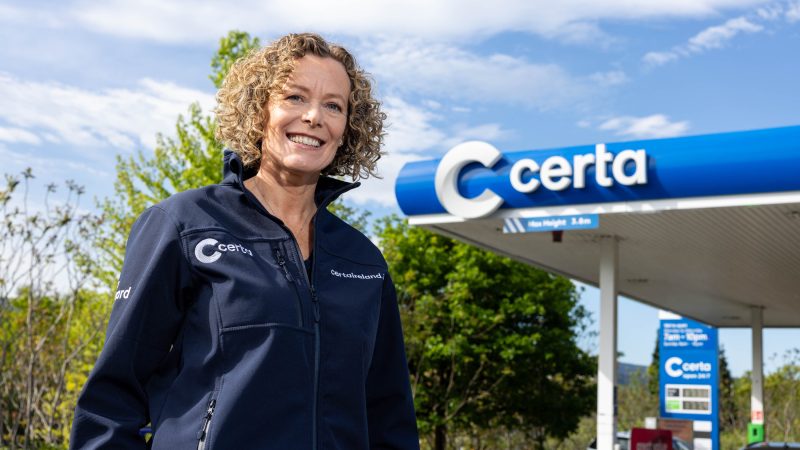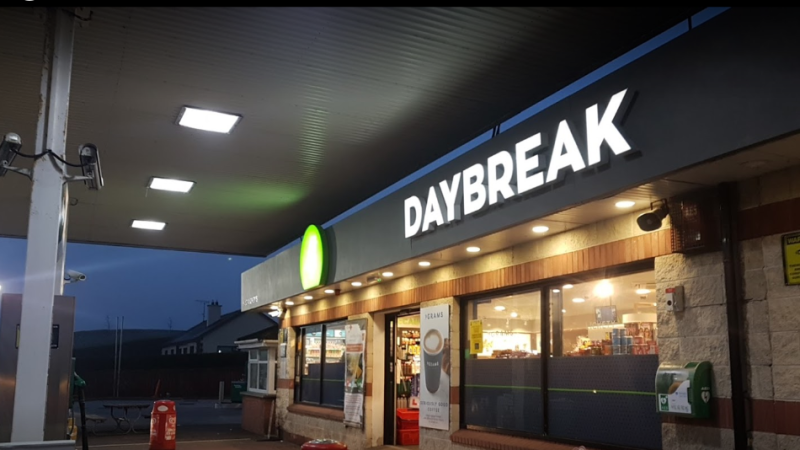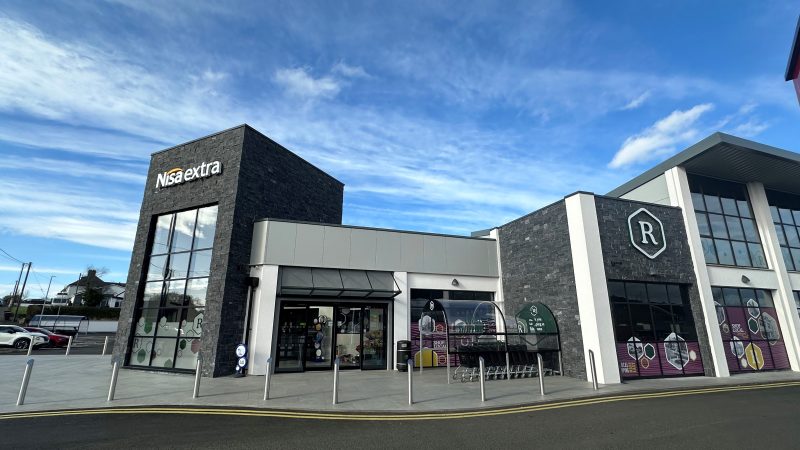Exclusive: Electric vehicles impact on forecourts
The rising popularity of electric vehicles has seen the automotive landscape change dramatically. Speaking to both Conor Faughnan, director of consumer affairs at the AA and the department of communications, climate action and environment in Ireland IF&CR found out exactly where the electric-hype is taking the forecourt industry.
The inevitable incorporation of electric vehicles (EVs) into the motoring industry, and plans to make them the norm in Ireland by 2030, could see further changes to the forecourt and convenience sector in the near future.
2018 has seen electrically charged vehicles make up 1.7 percent of all new cars sold. This is a trending and positive increase for the government, as they released plans that by 2030 the number of EVs on the roads aims to be half a million – around a quarter of all cars on Irish roads.
This environmental leap for Irish motoring means that we can expect changes coming from manufacturers, forecourts, fuel suppliers and anybody else within the retail and convenience sector.
Presumption would indicate that the lack of fuel being used within the forecourt and convenience industry could damage growth; however, incentives and funding into revamping sites could see an uptake of people partaking in the array of amenities.
30 – 40 minute wait times on vehicles charging, if not longer, means that the unavoidable long-trip will at some point have to result in a lengthy stay at a well-equipped forecourt, providing plenty of charging points and refreshments to satisfy both families and workers alike.
Speaking to Conor Faughnan, director of consumer affairs at the AA, he told us that he is confident of the popularity in EV’s to continue. He stated that, “The cars (EV’s) are becoming more mainstream however and we expect that to continue.” Conor also cited that it is no longer the enthusiast that is getting behind the EV.

Whilst admitting to the fact that the cars will take a number of years to really win mass consumer markets, Conor is predicting a ‘hockey stick’ adoption curve as the technology becomes familiar. “Already improvements both in infrastructure and in the capabilities of the cars have been significant and the barriers preventing people from buying them are diminishing,” said Conor.
Did you know?
- 529 electric cars were registered in the first half of 2018 in Ireland, which is 41.4 percent higher than the first half of 2017.
- There is currently a grant available of up to €5,000 towards the cost of buying an electric car. (For commercial vehicles the maximum grant is €3,800.)
- Some models of electric cars can travel up to 200km on a full charge.
- Driving 20,000 km in a Nissan Leaf fully electric car will only cost €200 in electricity. A typical petrol car would use 1400 litres to drive 20000km – and this would cost €1932 over 12 months based on price of €1.38 per litre.
- There are currently, on average, around 3,800 plug-in EV’s throughout Ireland, and this number is expected to increase with more awareness of environmental impact and more government legislation.
Conor was not naïve to the fact that this is a monumental task for any government to undertake as fossil fuel burning vehicles account for 99.8 percent of private cars and virtually 100 percent of the road freight haulage capacity.
This is perhaps why industry practitioners have been sceptical over the Irish government’s plans to axe petrol and diesel cars so hastily.
“In the medium to long term I believe that the use of fossil fuels for transport will diminish and disappear. Current oil retailers will have to reinvent their businesses if they wish to remain relevant,” said Conor.
What this may mean is future forecourts may see innovations within fast charging, making the charging process a more seamless flow; however, Conor believes forecourts will become more like retail parks and rest areas.
“In 10 or 15 years’ time all electric cars have a range of 800+ km they will only ever be charged overnight and roadside refuelling will be redundant,” said Conor. “However it will take a long time – 30-40 years – before that fully comes about.”
“Current oil retailers will have to reinvent their businesses if they wish to remain relevant. They are doing that already; for many the main portion of the business is their on-site retail proposition.”
“Due to high taxes and low margins, when you spend €30 on fuel and €2.50 on a takeaway coffee there is more profit made on the coffee.” This, perhaps, sums up the current scope for the fossil fuel markets within
Conor also disregarded the progress being made within the hydrogen fuel market. He advised IF&CR that this isn’t an alternative to the new wave of electric vehicles.
“A hydrogen engine still relies on internal combustion. Essentially these engines use hundreds of moving parts to move the vehicle via a series of controlled explosions,” said Conor. “Electric has so many advantages that I do not believe hydrogen will be the fuel of the future.”
From Conor’s tone it is clear that he believes the EV excitement will remain in Ireland. He did; however, allude to the fact the government could do more to incentivise driving EVs. This is testament to influential sway over public buying decisions being a way to achieve a zero-emissions motoring industry sooner, rather than later.
Why buy electric?
- Avoiding the toll – A government incentive, introduced this summer, gives drivers of electric cars reduced toll fees on roads around the country. Electric car owners can save up to €500 and commercial vehicle owners can save up to €1,000, with toll charges on the M50 and other major motorways recently slashed by up to 75pc.
- Affordability – An electric car can reduce your transport costs by 74pc, compared to a similar diesel engine car. The SEAI is offering grants of up to €5,000 towards the cost of an electric vehicle and motorists can avail of up to €5,000 VRT (Vehicle Registration Tax) relief.
- Wear and tear – The cost of keeping an EV on the road is minimal when comparing to a regular petrol or diesel car. An EV is otherwise a fully equipped automobile, so it does have electrical systems, HVAC, infotainment. Because they have regenerative brakes, this tends to save brake pads and rotors from wearing as quickly, at least this is the potential many have realized.
Conor may believe that the government could be doing more in terms of promoting the sale and popularity of electric vehicles; however, department of communications, climate action and environment within the Irish government state that plenty if being done, and that this is a positive step for forecourt and motoring in Ireland.

They advised IF&CR there is no reason to believe that the growth of EVs should negatively impact on this sector. It could, in fact, provide opportunities for the sector in the provision of EV recharging.
“Recharging of electric vehicles, even when using the most powerful fast chargers currently available in Ireland, will typically require drivers to stop for longer periods than refuelling of petrol or diesel vehicles,” said a spokesperson for the department.
Contrary to the thoughts of others, the department advised that plenty is being done to sustain the ambitious idea of abolishing fossil fuel cars by 2030.
“The Government is very active in this area. As well as providing a number of incentives for the purchase of electric vehicles, there is an electric vehicle public engagement programme which is run by the Sustainable Energy Authority of Ireland,” said the DCCAE.
This includes: an advertising campaign “The New Face of Driving Electric”, a dedicated website – www.DrivingElectric.ie – providing information on buying and driving an EV including the models available and links to dealers to arrange a test drive, and road shows which provide opportunities for people to test drive an electric vehicle.
They also advised that the number of electric vehicles in Ireland has increased from 3,800 at the end of 2017 to almost 6,500 at the end of August, 2018.
The department continued to place praise upon the ideals, stating, “Electrification of the car fleet represents a feasible option in Ireland, where supporting grid infrastructure is developed.
“Advances in battery technology, increasing competition in the market and falling vehicle costs would suggest that electrification will be the predominant low emission choice for private car, taxis and commercial vans in the short to medium term.”
Both these sources are aware of the trepidations surrounding the government’s plans regarding electric vehicles, but the overall consensus would appear to be positive.
One thing is for sure, these plans are here to stay. Both the motoring and forecourt arenas need to be prepared for changes and be able to adapt to one of the biggest shifts both industries have seen since their creation.









